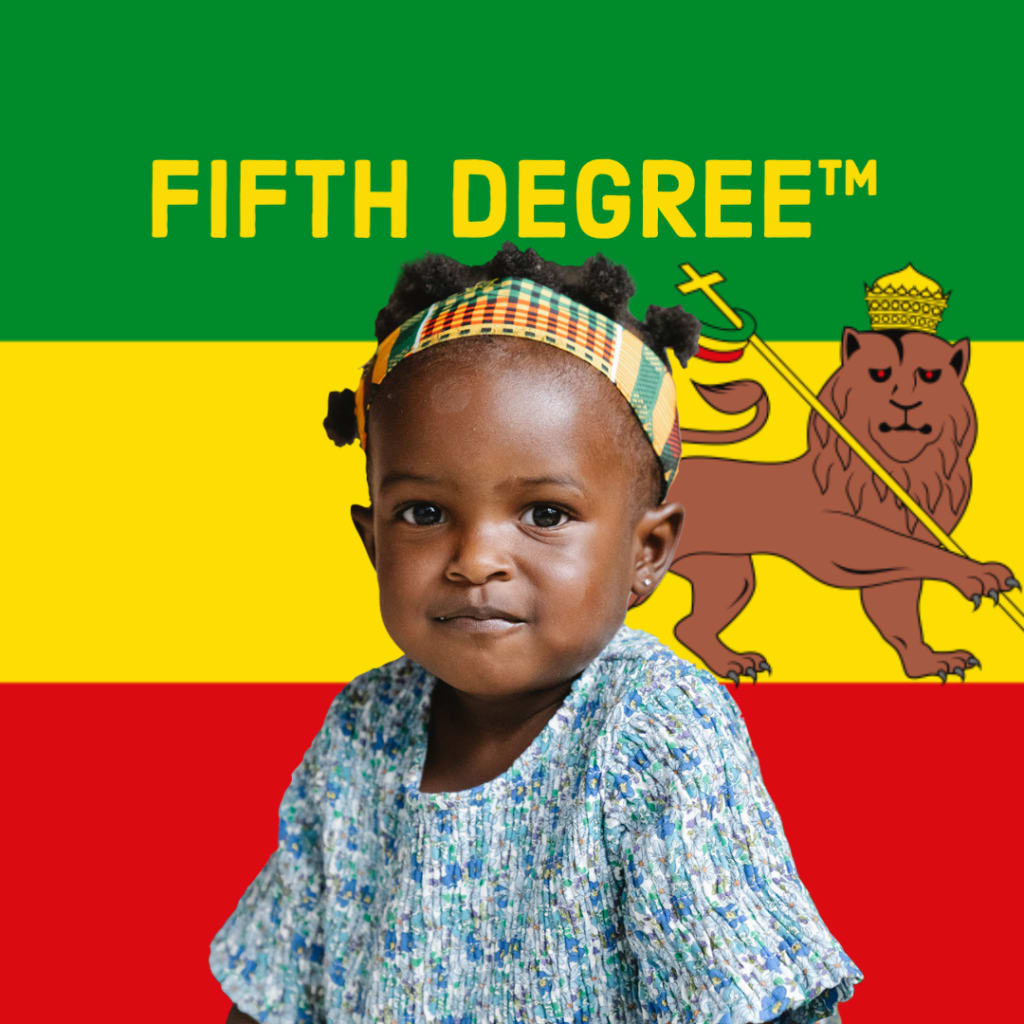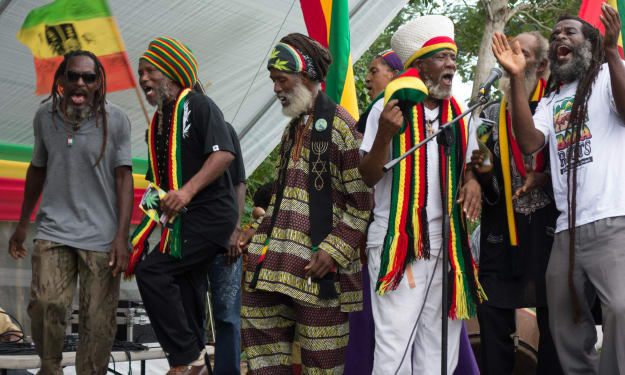Rastafarian Culture and the Significance of Reggae Colors
Exploring the Roots, Impact, and Symbolism of Rastafarian Culture through Reggae Colors

Rastafarian culture is a vibrant and unique expression of spirituality, social justice, and artistic creativity that originated in Jamaica in the early 20th century. At the heart of Rastafarianism is a deep connection to reggae music, which has become a global symbol of freedom, peace, and rebellion. But reggae music is more than just a sound – it's also embodied in the iconic red, green, and gold colors that are synonymous with Rastafarian culture.
In this post, we'll explore the significance of reggae colors in Rastafarianism, including the symbolism and meanings behind each color. We'll also delve into the roots of Rastafarian culture and the important role that reggae music plays in expressing the values and beliefs of Rastafarians. Finally, we'll examine the influence of Rastafarianism on art and fashion, and how reggae colors have become a powerful visual symbol of Rastafarian culture. So, let's dive into the colorful world of Rastafarianism and explore the importance of reggae colors in this vibrant culture.
The Roots of Rastafarian Culture
The origins of Rastafarianism can be traced back to Jamaica in the early 20th century, a time when the country was struggling with poverty, colonialism, and social inequality. The movement emerged as a response to these challenges, and sought to promote spiritual and social liberation for the people of Jamaica.
Rastafarianism developed out of a mix of African religious traditions, such as Ethiopian Christianity, and Jamaican cultural practices, such as the use of cannabis as a sacrament. The movement was heavily influenced by the teachings of Marcus Garvey, a Jamaican activist who advocated for black nationalism and Pan-Africanism.
One of the key beliefs of Rastafarianism is the divinity of Haile Selassie I, the former emperor of Ethiopia who was seen as a messianic figure by many Rastafarians. Selassie I was seen as a symbol of black pride, and his coronation in 1930 was seen as a fulfillment of biblical prophecy.
Rastafarianism places a strong emphasis on spirituality, and many Rastafarians practice a form of meditation and prayer known as "reasoning." Rastafarians also place a high value on social justice and equality, and are known for their activism on issues such as poverty, racism, and police brutality.
Another important aspect of Rastafarianism is the idea of "Babylon," which refers to the oppressive forces of capitalism, colonialism, and imperialism that have historically oppressed black people. Rastafarians see themselves as a counter-culture to Babylon, and seek to create a society based on love, equality, and spiritual awareness.
Reggae Music and its Significance in Rastafarian Culture
Reggae music emerged as a cultural force in Jamaica in the 1960s and 1970s, and has since become an important symbol of Rastafarianism and Jamaican identity. The roots of reggae can be traced back to earlier musical styles, such as ska and rocksteady, but it was the innovations of musicians like Bob Marley, Peter Tosh, and Bunny Wailer that transformed reggae into a global phenomenon.
Reggae music has always been closely associated with Rastafarianism, and many reggae artists have been outspoken advocates for Rastafarian beliefs and values. For Rastafarians, reggae music is more than just entertainment – it's a way to express their spirituality, their political views, and their cultural identity.
The themes and messages in reggae music are wide-ranging, but many songs deal with issues of political and social commentary. Reggae artists often use their music as a platform to speak out against oppression, poverty, and inequality, and to promote messages of peace, love, and unity. Many reggae songs also draw on Rastafarian beliefs, such as the importance of self-determination and the need to resist Babylonian forces.
One of the most important themes in reggae music is the idea of "One Love," which is a central tenet of Rastafarianism. The concept of One Love emphasizes the unity of all people, regardless of race, religion, or nationality, and is often expressed through the use of the phrase "One Love" in reggae songs.
The Significance of Reggae Colors in Rastafarian Culture
In addition to music, reggae colors are an important symbol of Rastafarian culture. The colors, which include red, green, and gold, are often seen in clothing, flags, and other Rastafarian imagery. Each color has a specific meaning and significance, and is deeply rooted in Rastafarian beliefs and values.
Red is the color of the blood of martyrs and is symbolic of the struggles and sacrifices made by Rastafarians and their ancestors. It is also associated with the life force and vitality, and represents the spirit of the Rastafarian movement. Red is often used to symbolize the divine and the spiritual, and is a reminder of the importance of spirituality in Rastafarian culture.
Green represents the vegetation of the earth and is associated with growth, harmony, and prosperity. It is also a symbol of the African continent and the ancestral homeland of many Rastafarians. Green represents the earth and the natural world, and is a reminder of the need to protect and respect the environment.
Gold is the color of the sun and is symbolic of the wealth and riches of Africa. It is also associated with the glory and majesty of the divine, and represents the spiritual and material prosperity of Rastafarian culture. Gold is often used to symbolize the positive and uplifting aspects of Rastafarianism, and is a reminder of the importance of hope and optimism.
Together, the colors red, green, and gold represent the Rastafarian movement and its values of spirituality, social justice, and cultural identity. They are a symbol of the struggles and triumphs of Rastafarians and their ancestors, and serve as a reminder of the ongoing fight for equality and justice around the world.
Rastafarianism and the Influence on Art and Fashion
Rastafarian culture has had a significant influence on art, fashion, and design, both in Jamaica and around the world. Rastafarianism has inspired a wide range of creative expressions, from music and literature to visual art and fashion. One of the most notable aspects of Rastafarian culture that has had a major impact on the world of art and fashion is the use of reggae colors.
Reggae colors, which include red, green, and gold, have been incorporated into clothing, accessories, and visual art. Clothing and accessories inspired by Rastafarian culture often feature bold stripes or patterns in these colors, and are often made from natural materials like cotton, hemp, or bamboo.
In addition to clothing and accessories, Rastafarian themes are also incorporated into visual art. Many artists have been inspired by the symbolism and imagery of Rastafarian culture, and have created works of art that reflect the movement's values and beliefs. For example, the Jamaican artist Ras Daniel Hartman is known for his colorful paintings that depict Rastafarian themes and symbolism.
Rastafarian culture has also had an impact on fashion and design. The iconic Rastafarian hairstyle, known as dreadlocks, has become a popular hairstyle around the world. The look has been adopted by people of all races and backgrounds, and has become a symbol of rebellion and individuality. The use of natural materials in clothing and accessories has also become popular in the world of sustainable fashion.
Conclusion
Rastafarian culture is a vibrant and influential movement that has its roots in Jamaica. Rastafarianism is a belief system that places emphasis on spirituality, social justice, and cultural identity. Reggae music is a central part of Rastafarian culture, and it has become a cultural force in Jamaica and around the world. The use of reggae colors - red, green, and gold - is also an important part of Rastafarian culture, with each color representing different aspects of Rastafarian beliefs and values.
Furthermore, Rastafarianism has had a significant impact on art, fashion, and design, with the use of reggae colors and Rastafarian themes becoming popular in clothing, accessories, and visual art. The movement's emphasis on sustainability, natural materials, and cultural identity has influenced the world of sustainable fashion and design.
In understanding Rastafarian culture, it is important to recognize the significance of reggae music and colors, as well as the movement's emphasis on spirituality, social justice, and cultural identity. By learning more about Rastafarianism, we can gain a greater appreciation for this influential movement and its impact on popular culture.
So, we encourage readers to learn more about Rastafarianism, and the importance of reggae music and colors in the movement. By exploring the beliefs and practices of Rastafarians, we can gain a deeper understanding of their culture, values, and contributions to the world of art, fashion, and design.
Final Note
If you’re interested in exploring who is Jah further, we invite you to check out Fifth Degree’s collection of Rastafarian clothing. Our clothing is designed to reflect the spirit and teachings of Rastafarianism, with bold colors, empowering messages, and a commitment to sustainability and ethical production. We believe that what you wear can be a powerful expression of your values and beliefs, and we’re proud to offer a range of high-quality, stylish, and socially conscious clothing for individuals who are seeking to live in harmony with nature and the divine. Visit our website today to learn more about our collection and find the perfect Rastafarian clothes for woman for you.
About the Creator
Enjoyed the story? Support the Creator.
Subscribe for free to receive all their stories in your feed. You could also pledge your support or give them a one-off tip, letting them know you appreciate their work.






Comments
There are no comments for this story
Be the first to respond and start the conversation.